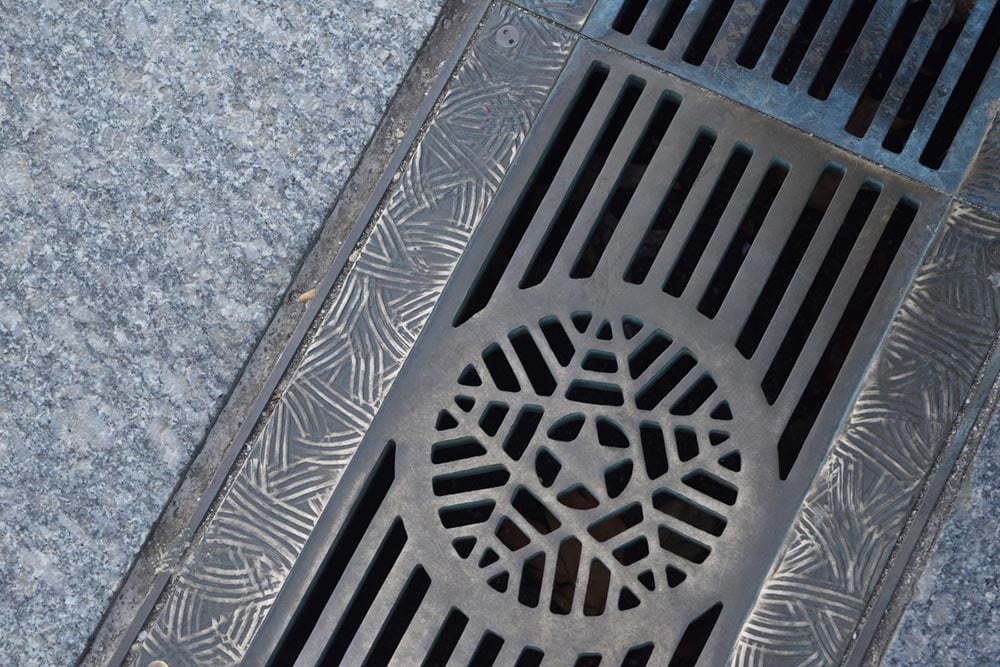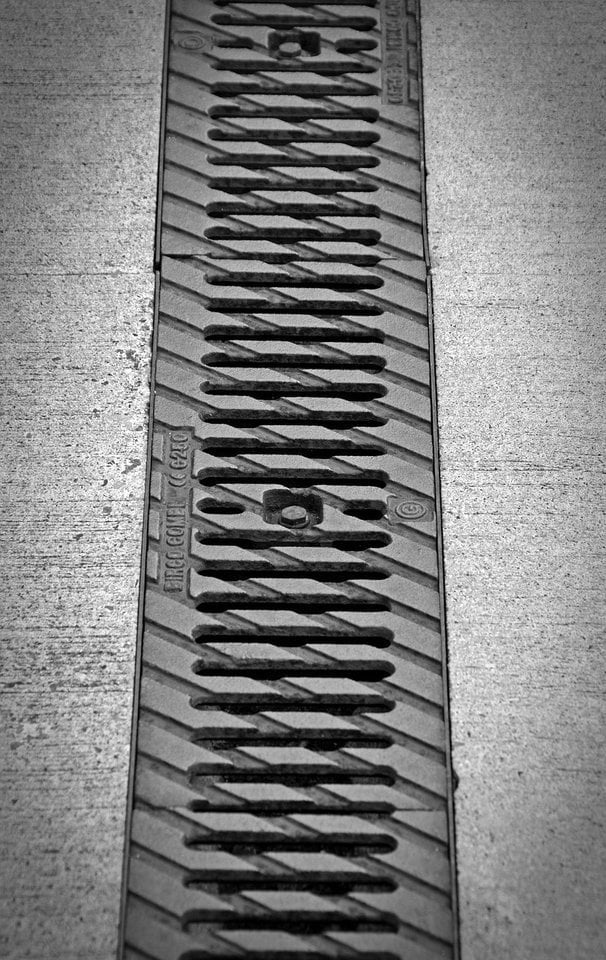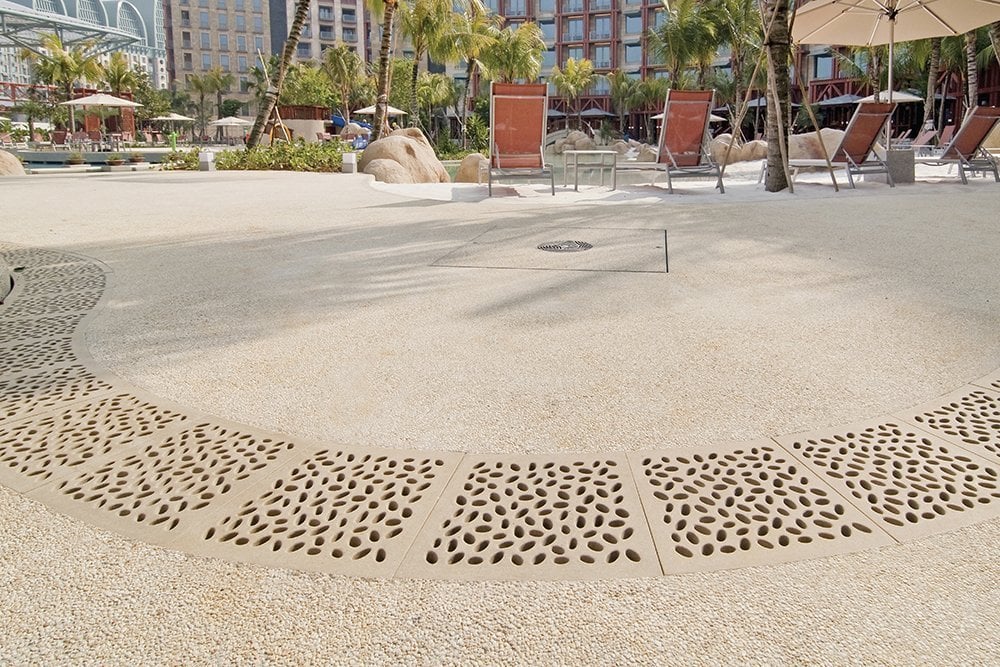In the world of drain grates, the term ‘limited options’ never exists. Manufacturers around the globe produce all kinds of drain grates, from heavy to light duty, and for various purposes. Even the drain types are different, ranging from trench drains, catch basins, pool drains, shower drains, etc.
 Close up view of a drain grate with a star design.
Close up view of a drain grate with a star design.
Coupled with some complicated terms, it is an agony finding the ideal one for your drainage settings. However, fret not for today, we have compiled together a list of tips to consider to make your drain grate hunting a lot easier.
Weight/load class
As most drain grates are for roads or pathways, it is paramount that grates would need to be able to be load-bearing. There are quite a few different load class standards, but the most common standards many drain grate manufacturers use are EN 124 (UK) and EN 1433 (US).
EN 124 and EN 1433 are applied to drain grates used by pedestrians or vehicles, particularly gully & manhole covers, and channel drain covers, respectively. The grates are labeled a loaded class based on the max load it can bear before failure. For EN 1433, the max weight is in lb per foot, and classes divided with letters. Whereas for EN 124, the max weight is in tonnes, and classes divided with group numbers.
- A15/Group 1: (max 3,372 lb/1.5 tonnes per ft) For pedestrian and bicycle traffic.
- B125/Group 2: (max 28,100 lb/12.5 tonnes per ft) For pedestrians and areas with little vehicle traffic. E.g.: private car parks.
- C250/Group 3: (max 56,200 lb/25 tonnes per ft) For curb-sides or roads with slow or moderate speed vehicle traffic.
- D400/Group 4: (max 89,920 lb/40 tonnes per ft) For main roads, highways.
- E600/Group 5: (max 134,800 lb/60 tonnes per ft) For areas with industrial vehicles like forklifts and trucks.
- F900/Group 6: (max 202,320 lb/90 tonnes per ft) For areas with especially heavy wheel loads such as airport pavements or docks.
Drain size compatibility
While there are some standard drain width sizes, not all drainage widths are the same. For one, some manufacturers produce grates with unique sizing. Many drainage and grate manufacturers usually would have their grates fit only to their specific drain channels. While it’s useful if you are using the channels and grates of the same manufacturer, knowing it will fit. It also means that those grates would not work on drains bought elsewhere or custom sized ones.
 Heavy-duty ductile iron grates
Heavy-duty ductile iron grates
However, there are some alternatives to this. There are still drain grate manufacturers who produce grates to fit some standard drain widths or those manufactured by other companies. As for custom size drain, some companies do also have grates and frames customizable to any sizes.
ADA compliance
ADA, known as the "Americans with Disabilities Act," is a government-set standard that requires public-use products to follow specific regulations to be disabled-friendly. What this means for drain grates or any grate types in public, is that the drain holes need to adhere to a particular size. For grates certified ADA compliant, the sides of the holes that are parallel to the general direction of traffic have to be ½” or less.
The sizes of the opening not horizontal to traffic direction are less restrictive and can be any size. Why the need for that is to prevent wheelchair wheels or walking cranes from getting stuck or slipping through the grate openings. While seemingly limited, the grate hole shapes can still be designed to look good and drain surface water effectively, yet a hazardless surface for the disabled to cross.
Aesthetics
The most subjective, and probably the most time-consuming decision factor, is probably aesthetics. Today, there are a plethora of different drain grate hole patterns and designs, not to mention different materials. A quick search, and you’ll see drain grates with simple slot patterns, intricate ones, or even customizable ones. Even the materials vary across manufacturers. Everything from classic choices like cast iron to plastic to over-the-top options like stainless steel.
 A pebble pattern design on a stone grate.
A pebble pattern design on a stone grate.
Some opt for grates made of unique materials such as stone. While there are lots of aesthetic options to consider, we have tips for those who are lost. For starters, consider the environment and application of the grates. For areas with natural colors or materials, a nature colored grate, or grates made from natural materials, or nature-themed patterns may be a good match. Metal or stone grates would pair well with a more elegant or premium application.
Hunting for the ideal drain grates
While not the entire long list of tips, these are just some of the essential few. If we mention every consideration here, this article could go on way longer. Of all considerations, a drain grate’s load class is of the highest priority.
A wrong load class could result in grates breaking easily and pedestrians/vehicles getting damaged/injured or merely having an unnecessarily reinforced grate. It is best to also check with each grate manufacturers on their grate specs and options. The info gives you a better idea of the possible conditions their grates can be modified to fit. Everything else from there on is down to personal tastes and the styling of the drain surroundings.










